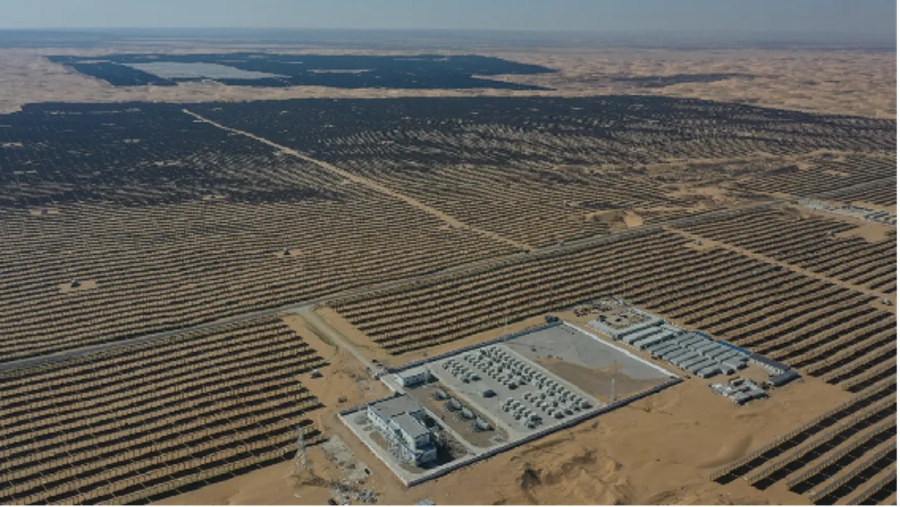Innovative Grid-Forming Solutions Revealed at Huawei’s 2nd APAC Smart PV Technology Workshop

Dr. Fang Liangzhou, President of Marketing and Sales Service Strategy & Marketing Dept, Huawei Digital Power, opened the event with a speech highlighting the challenges of increased PV penetration, such as instability and technical issues due to renewable energy’s intermittency. He emphasized that grid-forming technology is the solution to ensure grid stability with high renewable energy penetration.
Dr. Liu Yunfeng, Chief Scientist of Huawei Digital Power, provided an overview of the evolving energy landscape, highlighting the growth of solar power and the integration of semiconductors in energy systems. He discussed challenges like transient stability and inertia in large-scale renewable integration, emphasizing the crucial role of energy storage and showcasing successful case studies such as a smart PV and energy storage system in Qinghai, China.
Huawei has launched its Grid-Forming Smart Renewable Energy Generator Solution, leveraging its expertise in PV, energy storage, and grid-forming technologies. The Huawei’s Grid-Forming Smart Renewable Energy Generator Solution increases new energy access by 40%, redefines voltage, frequency, and phase angle stability, and ensures safety and reliability. It integrates digital and power electronics technologies to achieve comprehensive digitalization of power plants.
Dr. Xin Yaozhong, President of Industrial Control Systems Industry Alliance, Chief Expert of China Electricity Council, delivered a keynote speech, emphasizing that achieving net-zero carbon emissions differs from zero carbon, as various industries require different carbon levels; for instance, the industry needs low carbon, while agriculture needs high carbon. Renewable energy and power electronics have matured significantly and should play a greater role in system balance adjustment. If nuclear fusion technology cannot break through, a global grid should be established within the next 100 years to promote the development of renewable energy and ensure a sustainable future for humanity.
Red Sea Project: World’s Largest 1.3 GWh Micro-grid Infrastructure Construction in Saudi Arabia
The Red Sea Project in Saudi Arabia, the world’s first GWh-level microgrid project, features 400 MW PV and 1.3 GWh energy storage. Huawei provides a modular and pre-integrated microgrid energy storage solution, assisting in project preparation, planning, implementation, and field experiment design. Rizwan Razaq, Huawei Digital Power Smart PV CTO of Middle East, shared insights and project analysis on leveraging Huawei’s expertise in design, simulation, and microgrid testing platforms. Huawei’s support in logic design and simulation for PV+ESS grid-forming and power grid stability control has been validated in real-world environments.
We are delighted to have had the esteemed participation of all keynote speakers at the event, who highlighted the latest trends, challenges, and requirements in the APAC Region. These included Prihastya Wiratama, Project Manager of ASEAN Power Interconnection, Fossil Fuel, Alternative Energy, and Storage of the ASEAN Centre for Energy (ACE); Mr. Anawach Wetwatana, Power System Engineer of Power System Analysis Section, Control and Protection System Division at Electricity Generating Authority of Thailand; Mr. Toch Sovanna, Director of the Department of Renewable Energy and Other Energy at the Ministry of Mines and Energy, Cambodia; Tobias Yang, Department Manager at TÜV Rheinland Power Electronics; Dr. Amir Hisham Bin Hashim, General Manager of Asia PSC Consulting; Dr. Jin Chi, CTO of Smart PV & ESS Product Line at Huawei APAC Digital Power; Dr. Huidong, Principal Expert at the China Electric Power Research Institute; Zhangyan, Huawei Digital Power BESS Solution Expert; Fortunato Leynes, P.E.E, President & CEO of National Transmission Corporation of the Philippines; Dr. Wang Junjun, Principal Energy Storage Specialist at Energy Sector, Mott MacDonald.
The event concluded with Chen Yong, President of Huawei APAC Digital Power Smart PV & ESS Business, delivering closing remarks. He emphasized the project’s strategic importance and Huawei’s dedication to enhancing grid stability and integrating renewable energy. The successful validation of these capabilities in real-world environments underscores Huawei’s leadership in advancing sustainable energy solutions.
Looking ahead, Huawei Digital Power is dedicated to continuous innovation and collaboration with customers and partners. Together, we aim to build a new power system centered on renewable energy, contributing to a sustainable and resilient future.











